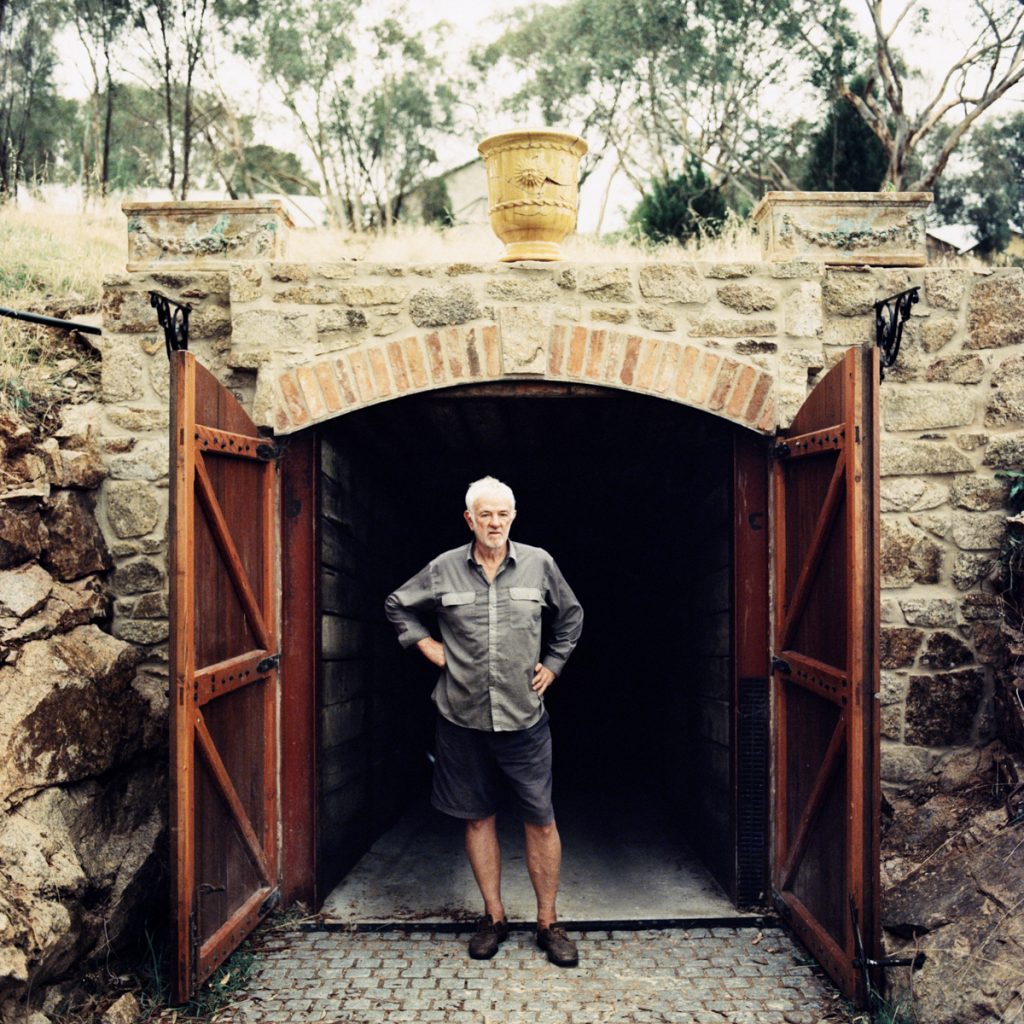Meet the makers: Giaconda
Author: Charlie Geoghegan

Some winemakers join the well-established order of a family business, following in the footsteps of their forebears. For others, there is no established order: they start from scratch with just an idea and a plot of land. In this three-part series, Charlie Geoghegan meets three producers who have forged their own path. First up is Rick Kinzbrunner from Australia’s Giaconda.
Rick Kinzbrunner tends a piece of land that has been “more or less the same” for about 400 million years. He planted some vines here about 40 years ago, but otherwise “it’s never been stuffed with”, he says.
This is in the foothills of the Victorian Alps, near the township of Beechworth – about three hours north-east of Melbourne. As Australian wine regions go, it’s not exactly a household name. It was viticulturally unheard of in 1982 when engineer-turned-winemaker Rick, new to the area, spotted a small property for sale: some land and a small house.
“It looked like a good block of land,” he says. “I planted some Cabernet and Chardonnay and took it from there.”
And so, almost “by accident”, Giaconda was founded. Since his inaugural 1985 vintage, Rick has carved out a niche at the very top of Australian fine wine. He got the estate off the ground thanks to “good luck and good instinct”, he says. But this was no vanity project or flight of fancy: Rick had considerable winemaking chops before he planted his first vine.
A decade or so earlier, Rick found himself in California. He worked for four years under Warren Winiarski, pioneering founder-winemaker at Stag’s Leap Wine Cellars in the Napa Valley. Warren’s “passion and attention to detail, being so particular about everything” stuck with Rick. So, too, did the influence of his peers: up-and-coming producers like David Ramey and John Kongsgaard that would also go on to do great things.
“They were always much more interested in traditional aspects of winemaking than people seemed to be in Australia,” Rick recalls. By the time he set up Giaconda, Rick had also made wine in Sonoma, Bordeaux and New Zealand. The former engineer was now “very much in a winemaking mindset”.
While Rick has, over the years, grown a range of different grapes, Giaconda is best known for its Chardonnay. “Chardonnay’s always been my passion, right from when I started,” Rick says. The grape was not a popular one in 1970s Australia, though Rick remembers tasting some of “the rare ones”.
A truly transformational moment came in 1976, when Rick tasted a Chablis from the négociant house Louis Latour. “I was with a friend in Boston,” he recalls. “It wouldn’t have been a great Chablis, but it was a good one. It was something I hadn’t seen before: another side of Chardonnay, with the minerality. I can remember how extremely different it was to what I already knew.”
Giaconda’s Estate Chardonnay has a rich and distinctive style, more easily mistaken for a Côte de Beaune white than a Chablis. But that bottle was enough to spur a lifelong fascination with the grape. Rick has long gravitated towards what he calls a more “traditional” style of Chardonnay winemaking – one that bucks the various trends that have come and gone in his time.
“I make the wine I like to drink,” he says matter-of-factly. “We’ve seen too many modern Australian Chardonnays. They’re too thin, too acid. They’re trying to imitate Chablis and not really successfully doing it. People are picking earlier, withholding malolactic fermentation, all sorts of ‘unnatural’ things. But for me, Chardonnay is all about secondary characters and minerality, not dominated by simple fruit.”
The Beechworth area has come on some way since Rick first arrived. “For a long time, I was the only one making wine here,” he says. “It was a bit of a guess.” Today there are over 20 vineyards in the region, most of them small, family operations like Giaconda. The scale of things suits Rick, who farms just four hectares of vines – and seems perfectly content to keep it that way.
“We’ve basically gotten smaller, not bigger,” he says. “My overall aim is to do less but do it better.”
Rick is the first Kinzbrunner to make wine, though he won’t be the last. His son, Nathan, joined the estate in 2007. “Hopefully one day he’ll be able to take over,” Rick says. Not that Kinzbrunner senior is planning on going anywhere.
“I might do a bit less and less all the time, but I’m not going to retire, put it that way.”
This article was originally published in the Autumn/Winter 2022 edition of No.3 magazine. Explore the wines of Giaconda here



Tasted my first Giaconda about 10 years ago. It was the best chardonnay I have ever tasted and stands comparison with very good Meursault. I have bought and drank several more over the last decade and it continues to deliver.
Thanks for your comment, Garry. Glad to hear your thoughts, and I’m sure that Rick would appreciate the comparison.
All the best, Charlie